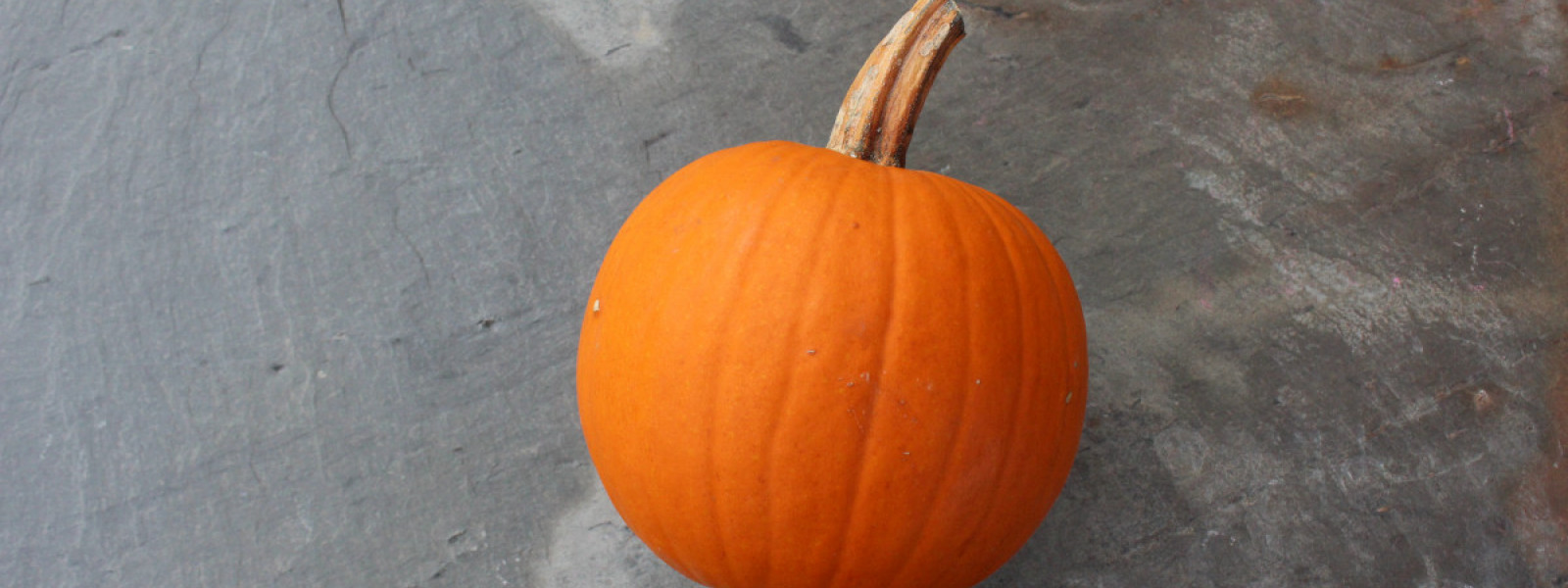Pie Pumpkin: All About It
Pumpkin has been cultivated in its native regions of South and Central America for over 9000 years. In the New England area, it was a staple among Native American tribes long before the arrival of Europeans.
The two most common varieties are the pie pumpkin, which has a thicker wall and is smaller in size, and the Jack o’ lantern, used for carving and display.
With the onset of cooler weather vines of the pumpkin die back and it is ready to harvest. Pumpkins will last for months with curing and proper storage. They are an excellent source of vitamin A in the winter, and are also high in iron, potassium, and phosphorus.
CULINARY TIPS
- Scrape the pumpkin’s inner walls with a wide serving spoon.
- Homemade pumpkin puree can be much thinner in texture than canned. After pureeing the cooked or baked pumpkin, you can simmer it on the stove to cook it down.
- Use cooked mashed pumpkin in cake and muffin recipes for added moisture.
- Substitute shelled pumpkin seeds for pine nuts in recipes for a less expensive alternative.
HOW TO STORE IT
Pumpkin will store at room temperature for several weeks, or for several months at 40-50ºF. Cook, puree, and pack it into airtight containers and store in the freezer for up to one year.
3 WAYS TO PREPARE IT
- Sauté ½ inch slices with rings of onion, fresh grated ginger until golden brown on both sides. Add a pinch of salt or sweeten slightly with drizzled honey or maple syrup.
- To use as edible decorative bowl, clean out and steam whole.
- Steam 1 ½ - 2 inch chunks for 15-20 minutes. Use for puree or top with butter.

